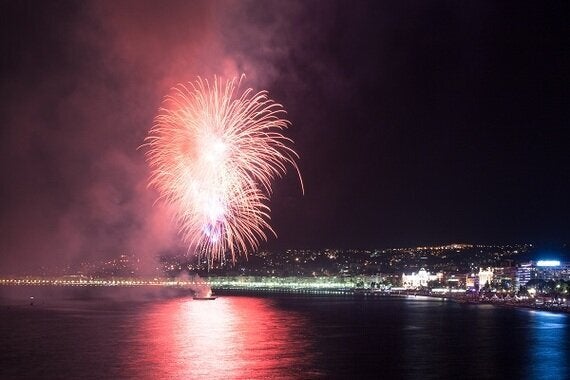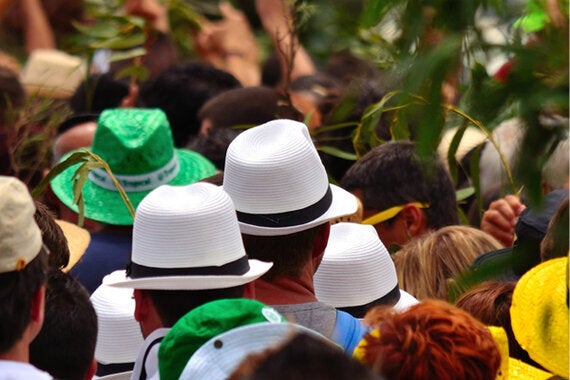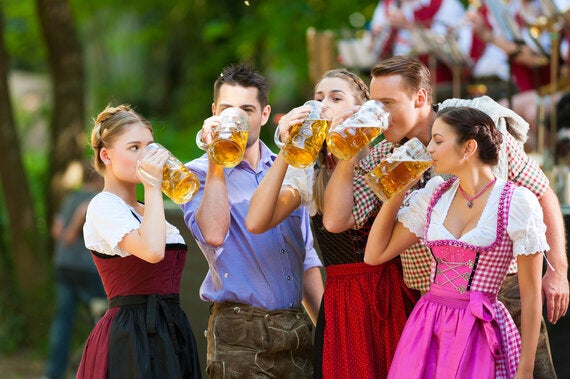Today is Bastille Day, France's national day commemorating the famous storming of the Bastille prison and the start of the French Revolution. Throughout France, le Quatorze Juillet is celebrated with parades, fireworks and parties.
Bastille Day (France)

While Paris is known for its impressive military display along the Champs Elysees, the south of France also puts on its own show. Nice's pebbled-beachfront Promenade des Anglais comes alive with free concerts, and the legendary Negresco Hotel hosts an evening of 'musical freedom'. Casino Ruhl offers the best view of the French Riviera fireworks at nightfall.
Top Tip: Head down to the beach where the real action is. There, you'll find the local 'Prom Parties' which are free concerts from French musicians, playing everything from jazz to rock to swing. These parties take place from 9pm until 11:30pm, with the fireworks starting at 10pm - don't miss it! Casino Ruhl offers the best panoramic views across the Mediterranean.
Fiesta de La Rama (Gran Canaria)

August 5 is Gran Canaria's colourful Fiesta de La Rama, the main festival in honour of Nuestra Senora de Las Nieves (Our Lady of the Snows). However, it is the night before on August 4 that the real party starts, with thousands of locals performing an ancient rain dance ritual in the town of Agaete. The parade starts up in the hills of the Tamadaba forest where dancers collect palm branches to wave and sing with as they make their way down to the port. The whole night finishes with a bang of fireworks over the water.
Top Tip: Nowadays, the 'Branch Festivity' has become so popular that there is now an entire museum dedicated to the event. The Museo de la Rama explains the origins of the sacred dance and gives a fascinating insight into the festival's unique history, decorations and beliefs. The museum is open Tuesday - Sunday, and entry is €1.50 and is a must-see.
La Festa Major de Gracia (Spain)

Anky / Shutterstock.com Anky / Shutterstock.com
For the locals in Barcelona, La Festa Major de Gracia is an event to look forward to all year long. From 15-21 August, residents in the upmarket area of Gracia compete to win the prize for best decorated street, according to the theme for the year. Originally intended just for locals, La Festa Major de Gracia has since opened up so visitors can also enjoy the free concerts, food stands and pop-up bars. After 8pm, the street decorations will be turned on, so it's best to wait until after the sun goes down to see Gracia in all its glory.
Top Tip: There is so much to see and do around Gracia, it's best to download the official app, available for free on iTunes or Google Play. There are also printed timetables and maps available for €1. The Barcelona metro also changes its hours to accommodate for the festival - there are several nights where the trains run all night long, or there is a special night bus which runs from Gracia every 10 minutes from 11pm until 5am.
San Gennaro Feast Day (Italy)

photogolfer / Shutterstock.com photogolfer / Shutterstock.com
Meanwhile, San Gennaro Feast Day is one of the most important religious holidays in Naples, Italy. It has a rather gory history - San Gennaro, a Christian martyr who was beheaded for his beliefs in 305AD, is the Patron Saint of the city. After his death, San Gennaro's blood was preserved in two sealed vials which now lie in the Chapel of the Treasure of San Gennaro. On September 19, thousands fill the Naples Cathedral and Piazza del Duomo to see if the blood of San Gennaro will turn to liquid. The day starts with a solemn mass at 9am, followed by a religious procession throughout the city centre. If the blood liquefies, it's believed that San Gennaro has blessed the city, and the festivities will continue for eight days with stands dotted along the streets, selling toys, lollies and toys.
Top Tip: If you plan on seeing the phenomenon first-hand, you'll need to arrive by 8am at the very latest to find some standing room (or even earlier if you hope to get a seat!). Try to squeeze in near the centre of the cathedral to see local women flocking to kiss the Cardinal's ring and hear his blessed prayer.
Oktoberfest (Germany)

While it might not be their national day, Oktoberfest has become synonymous with Munich, with around 6 million beer-loving tourists flocking to the city at the end of every summer. Running for 16 days from late September until the first weekend in October, Oktoberfest is the world's largest funfair and has been held since 1810. It's a traditional Bavarian event where visitors can enjoy dressing up in local costume, trying local specialities, and of course, downing litres of the famous Oktoberfest Beer.
Top Tip: The best way to enjoy all the festival has to offer is to reserve a table at one of the enormous beer tents. Entry is free, but without a reservation you'll have to wait for a free spot - and the queue can be hours-long. The Schottenhamel tent is the best value, while Käfer's is the place to see celebrities. Not a beer fan? You can still enjoy Oktoberfest - just camp out at the Weinzelt tent. Plan your visit via the official Oktoberfest website where you'll find a comprehensive timetable, information about the different tents and the all-important beer prices for 2014.
Heading off around the world is always fun, but if you can time your travels to coincide with a national celebration or holiday then you're in for a once-in-a-lifetime experience you'll never forget.